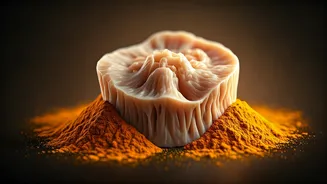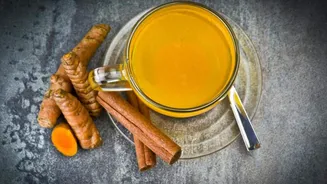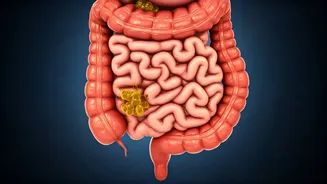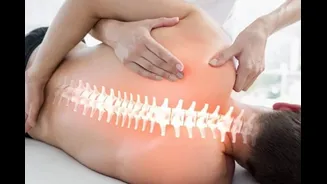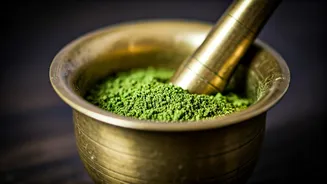Turmeric: Reality Check
Turmeric, a spice celebrated for its potential anti-inflammatory properties, often finds its way into health conversations centered around joint care.
The question of whether it truly benefits cartilage health is a common one. An orthopaedic specialist presents a candid view, highlighting that while turmeric may offer some advantages, it's not a magical fix. The specialist focuses on differentiating between turmeric’s possible benefits and overblown claims, especially related to its impact on cartilage.
Cartilage: The Basics
To understand turmeric's role, it's essential to grasp the basics of cartilage. Cartilage is the smooth, flexible tissue that acts as a cushion in our joints, enabling movement and absorbing shock. Its health is crucial for smooth and painless mobility. Cartilage naturally deteriorates with age and injury, making its maintenance vital. The orthopaedic expert stresses that any approach to cartilage health must consider these underlying factors, making informed choices instead of depending on exaggerated promises. Therefore, understanding cartilage function is paramount.
Turmeric's Anti-Inflammatory Action
Turmeric's primary bioactive compound, curcumin, has strong anti-inflammatory qualities. This is often cited as a reason for its perceived joint health benefits. Inflammation is known to negatively impact joint health. Curcumin's ability to help control inflammation can indirectly help with joint pain and swelling. However, the orthopaedic specialist underscores that curcumin’s impact on cartilage itself is limited. While it might alleviate symptoms, it does not guarantee cartilage regeneration or repair. So, while turmeric can be helpful, its benefits are primarily related to managing inflammation rather than directly repairing the cartilage.
Turmeric vs. Cartilage Repair
The assertion that turmeric can directly repair or regenerate cartilage is where the expert highlights some caution. Existing scientific evidence does not support strong claims about curcumin's role in cartilage repair. Cartilage is a complex tissue with a slow regenerative capability. Treatments that target cartilage regeneration often include more rigorous interventions than just supplements. The specialist suggests that while turmeric may offer advantages like anti-inflammation, it should not be considered as a standalone solution for cartilage restoration. A balanced approach that takes multiple factors into account is crucial for genuine joint health.
Holistic Joint Health
The conclusion of the orthopaedic specialist emphasizes a holistic approach to joint health. This means considering a combination of approaches. Diet, exercise, and lifestyle choices are vital. A balanced diet should include the nutrients required for joint health. Regular, gentle exercise helps maintain joint flexibility. The specialist also stresses the significance of weight management and the avoidance of activities that unduly stress the joints. Turmeric, while potentially helpful, is only a part of the bigger picture. Therefore, adopting a well-rounded strategy is key to effective joint care, in which turmeric might play a supporting role.
Bottom Line: Turmeric's Role
To summarize, the orthopaedic expert suggests that while turmeric can be a valuable addition to a joint health regimen, it is not a magic solution. Its anti-inflammatory properties can aid in reducing joint pain and discomfort, but its direct impact on cartilage repair is limited. Individuals should approach it as a component of a larger strategy. This plan should include nutrition, exercise, weight management, and consideration of individual joint health requirements. Thus, a balanced and well-informed viewpoint is key to using turmeric effectively. Consulting healthcare experts is critical for customized advice.


